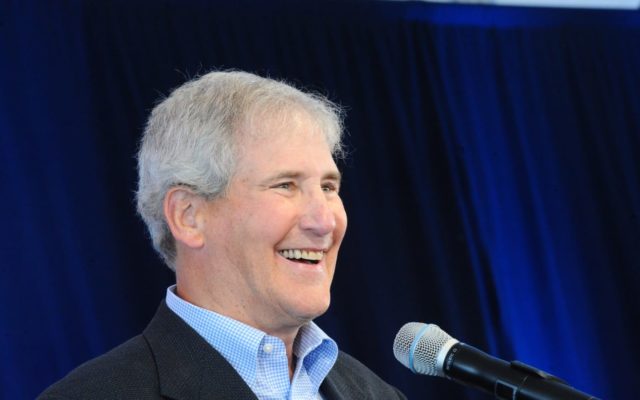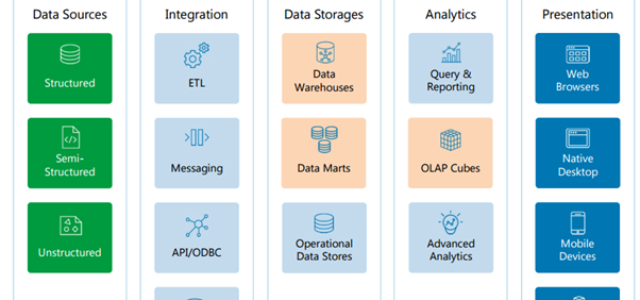Silicon Valley is often known as a cut-throat, technocratic place where the efficiency of algorithms often define success. Competition is ferocious and the pace of disruption and change can be dizzying. It’s not the type of environment where soft skills are valued particularly highly or even at all.
So it’s somewhat ironic that Bill Campbell became a Silicon Valley legend by giving hugs and professing love to those he worked with. As coach to executives ranging from Steve Jobs to the entire Google executive team, Campbell preached and practiced a very personal style of business.
Yet while I was reading Trillion Dollar Coach in which former Google executives explain Campbell’s leadership principles, it became clear why he had such an impact. Even in Silicon Valley, technology will only take you so far. The success of a business ultimately depends on the success of the people in it. To compete over the long haul, that’s where you need to focus.
The efficiency paradox
In 1911, Frederick Winslow Taylor published The Principles of Scientific Management, based on his experience as a manager in a steel factory. It took aim at traditional management methods and suggested a more disciplined approach. Rather than have workers pursue tasks in their own manner, he sought to find “the one best way” and train accordingly.
Taylor wrote, “It is only through enforced standardization of methods, enforced adoption of the best implements and working conditions, and enforced cooperation that this faster work can be assured. And the duty of enforcing the adoption of standards and enforcing this cooperation rests with management alone.”
Before long, Taylor’s ideas became gospel, spawning offshoots such as scientific marketing, financial engineering and the six sigma movement. It was no longer enough to simply work hard, you had to measure, analyze and optimize everything. Over the years these ideas have become so central to business thinking that they are rarely questioned.
Yet management guru Henry Mintzberg has pointed out how a “by-the-numbers” depersonalized approach can often backfire. “Managing without soul has become an epidemic in society. Many managers these days seem to specialize in killing cultures, at the expense of human engagement.”
The evidence would seem to back him up. One study found that of 58 large companies that have announced Six Sigma programs, 91 per cent trailed the S&P 500 in stock performance. That, in essence, is the efficiency paradox. When you manage only what you can measure, you end up ignoring key factors to success.
How generosity drives innovation
While researching my book, Mapping Innovation, I interviewed dozens of top innovators. Some were world-class scientists and engineers. Others were high-level executives at large corporations. Still, others were highly successful entrepreneurs. Overall, it was a pretty intimidating group.
So I was surprised to find that, with few exceptions, they were some of the kindest and most generous people I have ever met. The behavior was so consistent that I felt that it couldn’t be an accident. So I began to research the matter further and found that when it comes to innovation, generosity really is a competitive advantage.
For example, one study of “star” engineers at Bell Labs found that the best performers were not the ones with the best academic credentials, but those with the best professional networks. A similar study of the design firm IDEO found that great innovators essentially act as “brokers “ able to access a diverse array of useful sources.
A third study helps explain why knowledge brokering is so important. Analyzing 17.9 million papers, the researchers found that the most highly cited work tended to be largely rooted within a traditional field, but with just a smidgen of insight taken from some unconventional place. Breakthrough creativity occurs at the nexus of conventionality and novelty.
The truth is that the more you share with others, the more they’ll be willing to share with you and that makes it much more likely you’ll come across that random piece of information or insight that will allow you to crack a really tough problem.
People as profit centers
For many, the idea that innovation is a human-centred activity is intuitively obvious. So it makes sense that the high-tech companies that Bill Campbell was involved in would work hard to create environments to attract the best and the brightest people. However, most businesses have much lower margins and have to keep a close eye on the bottom line.
Yet here too there is significant evidence that a human-focused approach to management can yield better results. In The Good Jobs Strategy MIT’s Zeynep Ton found that investing more in well-trained employees can actually lower costs and drive sales. A dedicated and skilled workforce results in less turnover, better customer service and greater efficiency.
For example, when the recession hit in 2008, Mercadona, Spain’s leading discount retailer, needed to cut costs. But rather than cutting wages or reducing staff, it asked its employees to contribute ideas. The result was that it managed to reduce prices by 10% and increased its market share from 15% in 2008 to 20% in 2012.
Its competitors maintained the traditional mindset. They reduced cut wages and employee hours, which saved them some money, but customers found poorly maintained stores with few people to help them, which damaged their brand long-term. The cost savings Mercadona’s employees identified, on the other hand, in many cases improved service and productivity and these gains persisted long after the crisis was over.
Management beyond metrics
The truth is that it’s easy to talk about putting people first, but much harder to do it in practice. Research suggests that once a group goes much beyond 200 people social relationships break down, so once a business gets beyond that point, it becomes natural to depersonalize management and focus on metrics.
Yet the best managers understand that it’s the people that drive the numbers. As legendary IBM CEO Lou Gerstner once put it, “Culture isn’t just one aspect of the game… It is the game. What does the culture reward and punish – individual achievement or team play, risk-taking or consensus-building?”
In other words, culture is about values. The innovators I interviewed for my book valued solving problems, so were enthusiastic about sharing their knowledge and expertise with others, who happily reciprocated. Mercadona valued its people, so when it asked them to find ways to save money during the financial crisis, they did so enthusiastically.
That’s why today, three years after his death, Bill Campbell remains a revered figure in Silicon Valley because he valued people so highly and helped them learn to value each other. Management is not an algorithm. It is, in the final analysis, an intensely human activity and to do it well, you need to put people first.
Article by channel:
Everything you need to know about Digital Transformation
The best articles, news and events direct to your inbox
Read more articles tagged: Culture, Featured, Leadership







